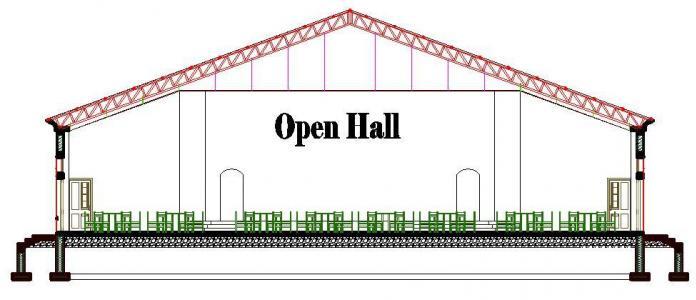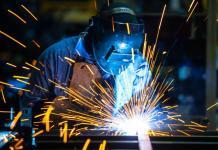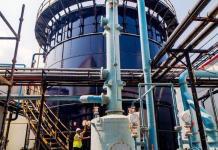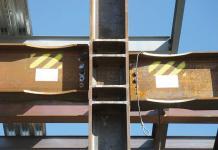Introduction
We all need a roof over our head. Nowadays, architects frequently use roof pattern and design to enhance the aesthetics and functionality of a building, and it is very important that engineers follow up and ensure that the structural integrity of such roof systems are guaranteed. On the 10th of December 2016, the roof a church building collapsed at Uyo in Akwa Ibom state Nigeria, leaving about 60 people dead, and many other injured. This is why such designs are to be taken seriously, especially when the span is large.
Large span construction of roof systems is usually found in public or commercial buildings. This comes in handy especially when there is need to have a large uninterrupted floor area. However, the efficiency of trusses in dealing with long span structures has been widely recognised in the structural engineering community, but there is no doubt that the longer the span, the more complex the design.
Some basic considerations in the design of trusses
(1)The connection design is as important as the member design. The connections could be welded or bolted or both.
(2) 2D idealisation of the structure is usually very sufficient for analysis and design.
(3) Joints are hardly pinned in reality, but the use of pinned joint is usually encouraged for the purpose of analysis and design.
(4) Trusses can be analysed as having continuous top and bottom chords, with the internal members pinned. In this case, loads can be applied at locations other than the joints with the resulting bending moment appropriately accounted for in the design.
(5) It is usually important to consider out of plane buckling for compression members in trusses. However, purlins usually take care of the top chord, while bracing can be used to take care of the bottom chord.
Read Also…
Design of Roof Purlins
(6) For efficient structural performance, it is recommended that the truss span to depth ratio be kept between 10 to 15.
(7) In the layout of truss systems, it is more preferable (in terms of economy and efficiency) to have the shorter members in compression and the longer members in tension.
(8) Welded connections offer more advantages in terms of deflection behaviour of trusses. Slack displacements are possible in bolted connections especially when non-preloaded bolts are used.
(9) In the design of compression members, buckling is the most critical.
(10) When member lines do not intersect at a node, it is important that the moment that arises due to the eccentricity be included in the design.
Design Example
The structural layout of a roof system is given below;
We are required to carry out the member design of the trusses for this 23m span open hall. The design data is given below;
Data
Design code: BS EN 1993-1-1:2005
Design wind pressure: 1.5 kN/m2
Variable load = 0.75 kN/m2
To make this post simpler and shorter, a 29 page fully referenced design paper for all the trusses in the roof system has been attached.
Click HERE to download the calculation sheet in PDF format (premium).
Thank you for visiting Structville today, and remember to tell your colleagues about us.
Read Also...
Practical Analysis and Design of Roof Trusses












Welldone Ubani.
Quite informing. Thanks.
Great Job!
Thank you very much
You are welcome
Thank you
Good work sir. Keep it up.
Keep it up Engr.
• You truly helped me understand this topic with your well researched post, thanks for all the good work.
bim services
bim servicesin USA
bim servicesin Uk
This is very educational content and written well for a change. It's nice to see that some people still understand how to write a quality post.! navigate here
Thanks for the post. I’m not an engineer but I’m developing an interest in roof trusses. I learned a lot form reading different posts. What still puzzles me is the vertical members in a post. Is there a formula to calculate how many vertical nodes/ posts for a certain span of a truss. Take for example 30 m span Pratt metal roof truss. How many vertical posts should it have? Thanks again.
Obinna, thanks for the post. Am an architecture was looking for steel roof details and I found this post. Thanks